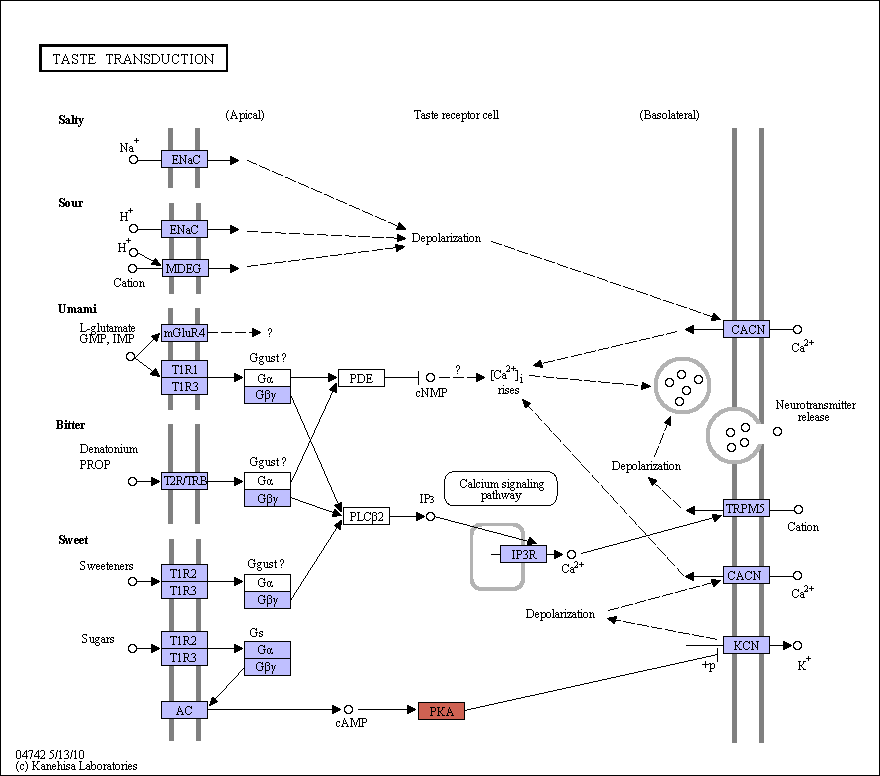|
All taste pathways are proposed to converge on common elements that mediate a rise in intracellular Ca2+ followed by neurotransmitter release. Na+ salt depolarizes taste cells by passive influx of Na+ through the amiloride-sensitive Na+ channel (ENaC). Acids depolarize taste cells by a variety of mechanisms, including influx of protons (H+) through ENaC and a proton-gated cation channel (MDEG). Two putative umami receptors have been identified: a truncated variant of the metabotropic glutamate receptor mGluR4 and the heterodimer, T1R1 + T1R3. Umami receptors are coupled to a signaling pathway involving activation of PLCbeta2, production of IP3 and diacylglycerol, release of Ca2+ from intracellular stores and activation of a transient receptor potential channel, TRPM5. Bitter compounds, such as denatonium and PROP, activate particular T2R/TRB isoforms, which activate gustducin heterotrimers. Activated alpha-gustducin stimulates PDE to hydrolyze cAMP, whereas betagamma subunits activate PLCbeta2 to generate IP3, which leads to release of Ca2+ from internal stores. Artificial sweeteners activate GPCRs (T1R heterodimers) apparently linked via PLC to IP3 production and release of Ca2+ from intracellular stores. Sugars apparently activate GPCRs linked via AC to cAMP production which, in turn, may inhibit basolateral K+ channels through phosphorylation by cAMP-activated protein kinase A (PKA). |
 Taste transduction - Reference pathway (KO)
Taste transduction - Reference pathway (KO)

 Taste transduction - Reference pathway (KO)
Taste transduction - Reference pathway (KO)

